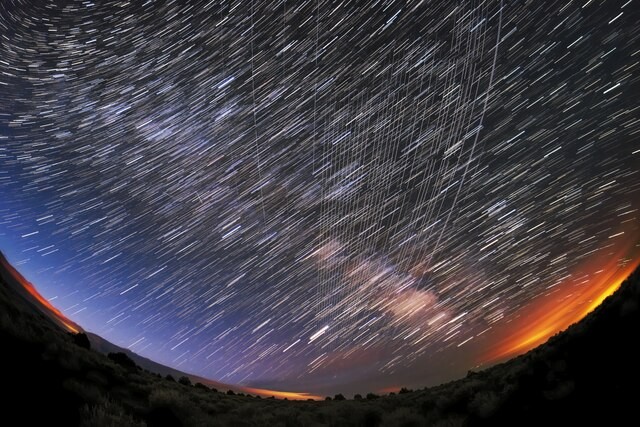
(Photo : Wikimedia Commons/M. Lewinsky/Creative Commons Attribution 2.0)
SpaceX has launched several Starlink satellites into space over the past years. However, a former NASA physicist claimed that Elon Musk's space company was putting us at risk from deadly cosmic rays.
SpaceX's Starlink Satellites Disrupts Earth's Magnetic Field
In Dr. Sierra Solter-Hunt's new study, she drew on new estimates that Elon Musk's space company is burning up over 2,755 lbs (1.3 tons) of wireless internet satellite junk into Earth's atmosphere per hour, resulting in the formation of a metal layer known as "conductive particulate" in orbit. She expressed amazement that the buildup of metal dust from the space industry has not received more attention.
Based on the most recent estimate made by astronomers in March, there are 5,504 Starlink satellites in orbit, of which 5,442 are in use. However, there are plans to launch tens of thousands more.
The physicist stated that particles from these satellites "distort or trap the magnetic field" that prevents Earth's atmosphere from leaving because of all of the highly conductive metal waste that settles in one region.
Such a layer of charged metal dust, in extreme cases, might cause "atmospheric stripping," which is similar to what happened to Mars and Mercury in antiquity. Dr. Solter-Hunt spent three years in the US Air Force Research Laboratory following her work on NASA's comet-catching Stardust mission research team in 2012.
There, in low-Earth orbit (LEO), the area of the upper atmosphere where Starlink's orbital network is located, she investigated the electromagnetic behavior of plasma plumes. She now offers consultations on the effects of space weather on the aerospace sector.
"We are at about 10,000 satellites [in orbit] right now, but in 10 to 15 years, there are likely going to be 100,000," Solter-Hunt added. "By the time we get to 100,000 I think it could be too late. In terms of this unplanned geoengineering experiment that is going to occur."
ALSO READ: NASA's Curiosity Rover Discovers Wave Ripples Supporting History of Water on Mars
Why Ex-NASA Physicist Raises Concern About Earth's Magnetosphere?
Her worries stem from the fact that the weight of this fine-particle metal trash already greatly exceeds that of the magnetically charged particles that shield Earth from cosmic radiation. The Van Allen Belts, two donut-shaped regions of tiny particles powered by solar radiation, are the largest known regions of trapped particles in the Earth's magnetosphere.
The belts loop from the magnetically charged North and South poles of Earth. The Van Allen Belts have a total mass of only 0.0004 pounds, or roughly 0.00018 kg, which is incredibly little in comparison to the metal debris that may cut it off from Earth.
Although their masses are not commonly approximated, the ring current, plasmasphere, and other elements of the magnetosphere are less thick than the Van Allen Belts. In other words, because of the magnetosphere's low mass and lightweight, a large amount of heavy satellite debris might have an extraordinary and dramatic effect.
"I think we need to stop using the ionosphere and atmosphere as a space industry trash bin immediately," she added.
Academic astronomers and SpaceX's rival satellite companies have filed legal objections with the US Federal Communications Commission (FCC) for years regarding SpaceX's Starlink aspirations. In particular, astronomers are concerned that the company's space debris may irreversibly disrupt ground-based observatories, putting an end to space research.
RELATED ARTICLE: NASA'sz DART Spacecraft Worked! Asteroid Killer Changed the Harmless Space Rock's Orbit More Than Expected
Check out more news and information on Space in Science Times.














